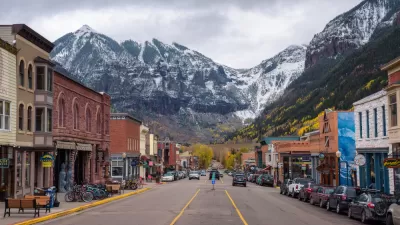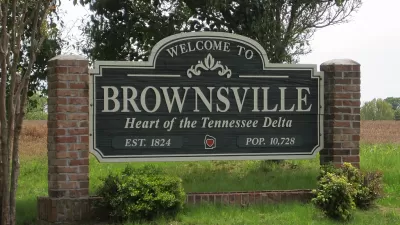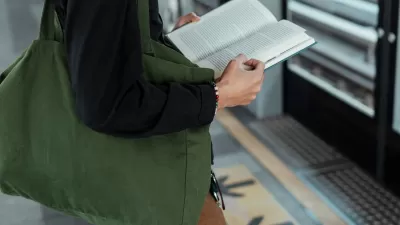Enabling local affections involves hard work from individuals, locally embedded institutions, a built environment scaled to people, and community-focused habits and practices.
Ever since our country was founded, moving has been in our collective DNA. Every year, 30 million Americans move, and we do so for all kinds of reasons—to get an education, to be closer to (or farther from) family, to be nearer to cultural amenities, and (most often) for a job. And although economists laud our incessant mobility as good for national prosperity, critics are increasingly worried about our apparent inability to be in place.
Rather than lament our national restlessness, Melody Warnick sets out to help nomads like herself in her new book, This Is Where You Belong: The Art and Science of Loving the Place You Live. The wife of an itinerant professor, Warnick has certainly contributed to the statistics on moving herself—her recent move to Blacksburg, VA was number six for her family. But instead of succumbing to loneliness and fatigue, as can be the case with any new move to an unknown place, Warnick decides to not just to get to know her community but to learn how to care for it.
FULL STORY: The Emergence of Place Attachment A Review of Melody's Warnick's "This is Where You Belong"

Americans May Be Stuck — But Why?
Americans are moving a lot less than they once did, and that is a problem. While Yoni Applebaum, in his highly-publicized article Stuck, gets the reasons badly wrong, it's still important to ask: why are we moving so much less than before?

Using Old Oil and Gas Wells for Green Energy Storage
Penn State researchers have found that repurposing abandoned oil and gas wells for geothermal-assisted compressed-air energy storage can boost efficiency, reduce environmental risks, and support clean energy and job transitions.

Placekeeping: Setting a New Precedent for City Planners
How a preservation-based approach to redevelopment and urban design can prevent displacement and honor legacy communities.

San Francisco’s Muni Ridership Grew in 2024
The system saw its highest ridership since before the Covid-19 pandemic, but faces a severe budget shortage in the coming year.

Colorado Lawmakers Move to Protect BRT Funding
In the face of potential federal funding cuts, CDOT leaders reasserted their commitment to planned bus rapid transit projects.

Safe Streets Funding in Jeopardy
The Trump administration is specifically targeting bike infrastructure and other road safety projects in its funding cuts.
Urban Design for Planners 1: Software Tools
This six-course series explores essential urban design concepts using open source software and equips planners with the tools they need to participate fully in the urban design process.
Planning for Universal Design
Learn the tools for implementing Universal Design in planning regulations.
Heyer Gruel & Associates PA
City of Moreno Valley
Institute for Housing and Urban Development Studies (IHS)
City of Grandview
Harvard GSD Executive Education
Salt Lake City
NYU Wagner Graduate School of Public Service
City of Cambridge, Maryland





























